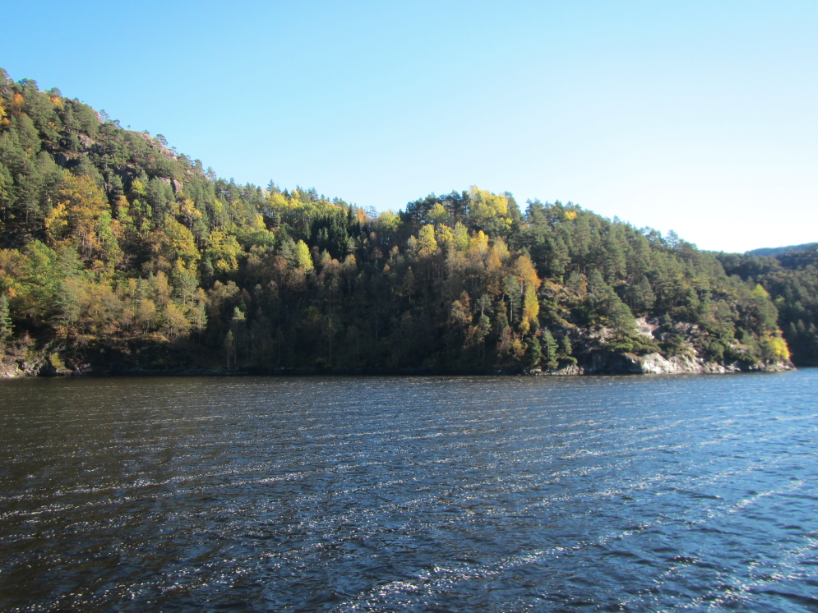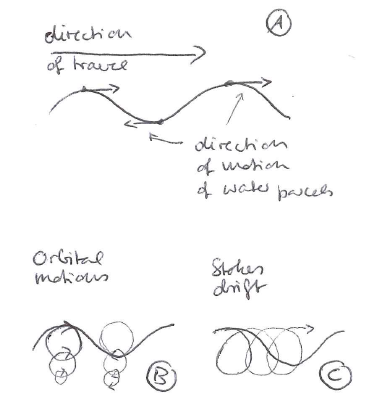
Langmuir circulation, take 2
Attempt at mechanistic understanding of Langmuir circulation.
After complaining about how I didn’t have mechanistic understanding of Langmuir circulation recently, and how I was too lazy to do a real literature search on it, my friend Kristin sent me a paper that might shed light on the issue. And it did! So here is what I think I understand (and please feel free to jump in and comment if you have a better explanation).
First, let’s recap what we are talking about. My friend Leela (and it was so nice to have her visit!!!) and I observed this:
Long rows of foam on the surface of the fjord, more or less aligned with the direction of the wind (we couldn’t tell for sure since we were on a moving boat, and since it was a tourist cruise we couldn’t ask them to stand still for a minute to satisfy our oceanographic curiosity). Foam is – and so much makes sense – accumulated in regions of surface convergence.
But let’s see. The explanation that Kristin forwarded me is from the paper “Upper ocean mixing” by J.N. Moum and W.D. Smyth for Academic Press Encyclopedia of Ocean Sciences, 2000. According to my understanding of their paper and others, Langmuir circulation is related to Stokes drift.
Stokes drift is the small current in the direction of wave propagation that is caused by orbital wave motions not being completely closed (even though they are as a first order explanation, and that’s what you always learn when you think about rubber ducks not being laterally moved by waves).
As the wave orbital motions decrease with depth, there is a shear in the Stokes drift, with strongest velocities being found at the surface. At the same time, if there are small disturbances in the wind field, there are small inhomogeneities in the resulting surface current, hence shear that generates vertical vorticity.
The combination of horizontal and vertical vorticity causes counterrotating vortices at the ocean surface. The convergences between two adjacent rows concentrate the wind-driven surface current into a jet at the convergence, hence providing a positive feedback.
Voila: Stokes drift!


Who can explain these foam stripes? No, it’s not Langmuir circulation | Dr. Mirjam S. Glessmer says:
[…] have seen them over and over again, and the most common explanation that people have is Langmuir circulation, which i don’t actually think it is (and I show you some evidence for why I don’t think […]